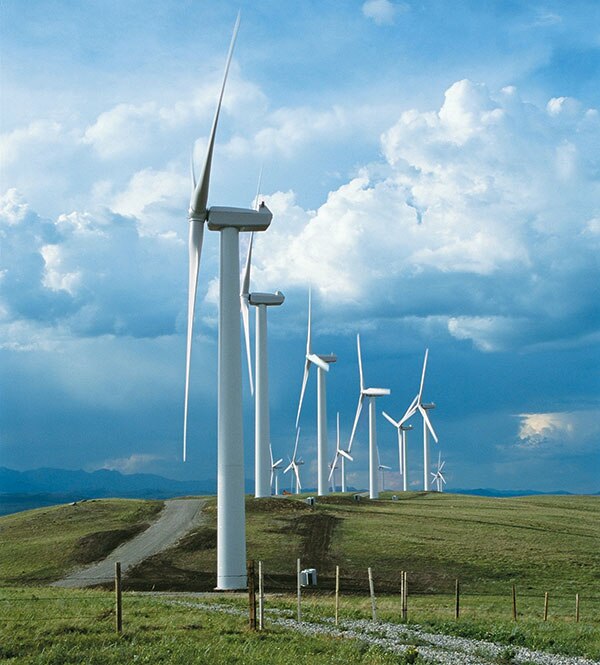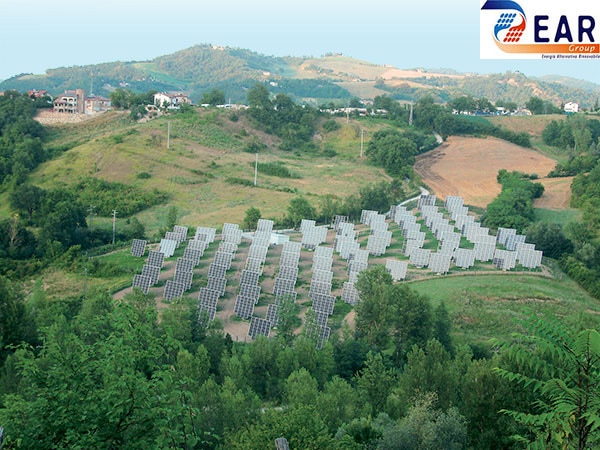Wind power plants and solar parks are now an integral part of a sustainable energy management strategy. The wind and the sun are reliable sources of energy. Sensors from SICK play a role in ensuring that wind power plants and solar parks work efficiently - also under very challenging climatic conditions.
Wind power plants generate kinetic energy from the wind. Here, it is the sensors' job to finely adjust the plant's individual components in such a way as to allow the wind to be used as effectively as possible and to generate a maximum amount of energy. The sensors must be adapted to cope with the changing ambient conditions and be highly durable, as replacing them at great height is not an easy task and is also very expensive. The rotor blades in wind power plants have to be adjusted based on the strength of the wind, as this enables the plant to achieve an optimum level of efficiency.
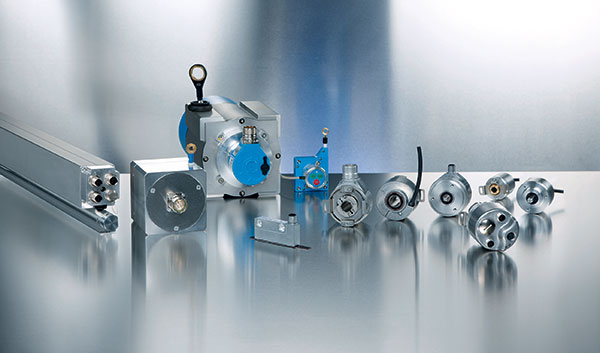 This adjustment is made by absolute encoders with magnetic scanning from SICK, for instance. To track the wind direction, the encoders set the nacelle to the optimum position. This prevents strong winds from causing malfunctions and the downtimes that result. The rotor speed can be measured with incremental encoders. They control and monitor the speed of the rotor. Encoders from SICK are highly resistant to weather conditions and electrical influences and are also maintenance-free and durable. Magnetic scanning, a rugged housing - enclosure rating IP67 - and the high shock and vibration resistance are ideal to meet the requirements for use in onshore and offshore wind power plants. Whether pitch adjustment, yaw control, or speed monitoring, the fact that more than 20,000 SICK encoders have been installed in pitch-controlled plants clearly demonstrates the expertise that the company has developed by working in this sector for over 10 years. [swf] /wp-content/uploads/swf/Windrad.SWF, 600, 331 [/swf] With this portfolio, SICK meets the requirements of the wind power industry in every way: from application consultation and engineering to continuous operation with minimum downtimes, SICK is there throughout all the development, production, and maintenance processes of the plant. Customers benefit from application-based solutions that stand out thanks to their efficiency, sustainability and investment security.
This adjustment is made by absolute encoders with magnetic scanning from SICK, for instance. To track the wind direction, the encoders set the nacelle to the optimum position. This prevents strong winds from causing malfunctions and the downtimes that result. The rotor speed can be measured with incremental encoders. They control and monitor the speed of the rotor. Encoders from SICK are highly resistant to weather conditions and electrical influences and are also maintenance-free and durable. Magnetic scanning, a rugged housing - enclosure rating IP67 - and the high shock and vibration resistance are ideal to meet the requirements for use in onshore and offshore wind power plants. Whether pitch adjustment, yaw control, or speed monitoring, the fact that more than 20,000 SICK encoders have been installed in pitch-controlled plants clearly demonstrates the expertise that the company has developed by working in this sector for over 10 years. [swf] /wp-content/uploads/swf/Windrad.SWF, 600, 331 [/swf] With this portfolio, SICK meets the requirements of the wind power industry in every way: from application consultation and engineering to continuous operation with minimum downtimes, SICK is there throughout all the development, production, and maintenance processes of the plant. Customers benefit from application-based solutions that stand out thanks to their efficiency, sustainability and investment security.
In solar parks too, the aim is to use the energy radiated by the sun in an optimum manner. With this in mind, the EAR Group, a major provider of turnkey photovoltaic systems in Italy, is integrating trackers, which align the solar fields to enable them to optimally follow the sun. Two positioning drives align the solar field to the vertical position of the sun,and adapt the field according to the horizontal movement of the sun. These two movements need to be monitored.
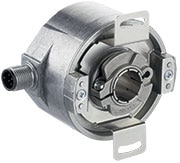 The EAR Group found the ideal solution for the detection of the angular change of the solar fields in the DFS60 incremental encoders with through hollow shaft. The sensor has a very high resolution,enabling precise adjustment of the solar fields. To allow the solar fields to absorb as much solar radiation as possible both in summer and in winter, the IME inductive proximity sensor was incorporated. These sensors allow accurate and non-contact axis angle limitation of the tracker mechanism. They are positioned so that the solar fields can receive the maximum amount of sunlight via the trackers in both winter and summer.
The EAR Group found the ideal solution for the detection of the angular change of the solar fields in the DFS60 incremental encoders with through hollow shaft. The sensor has a very high resolution,enabling precise adjustment of the solar fields. To allow the solar fields to absorb as much solar radiation as possible both in summer and in winter, the IME inductive proximity sensor was incorporated. These sensors allow accurate and non-contact axis angle limitation of the tracker mechanism. They are positioned so that the solar fields can receive the maximum amount of sunlight via the trackers in both winter and summer.
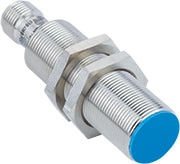 The horizontal working angle of the trackers is limited at each end position by an IME sensor and spans 240° from one position to the other. This makes it possible to follow the sun's entire path each day. In actuality, the solar fields rotate over an angle of approximately 120° in winter to around 220° in summer. The need for the SICK sensors arose from the desire to use the maximum movement of the trackers and simultaneously to ensure an exact placement of the solar installation. This requirement was satisfied in every respect - what's more, under what were sometimes very harsh ambient conditions.
The horizontal working angle of the trackers is limited at each end position by an IME sensor and spans 240° from one position to the other. This makes it possible to follow the sun's entire path each day. In actuality, the solar fields rotate over an angle of approximately 120° in winter to around 220° in summer. The need for the SICK sensors arose from the desire to use the maximum movement of the trackers and simultaneously to ensure an exact placement of the solar installation. This requirement was satisfied in every respect - what's more, under what were sometimes very harsh ambient conditions.
- Product information: DFS60 incremental encoder, IME inductive proximity sensor
- Product portfolio: Absolute encoder, incremental encoder
- Customer informationen: EAR Group
